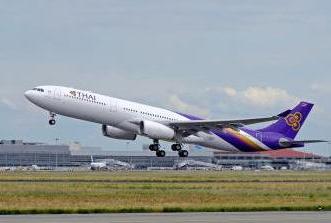
NEWSROOM
 |
NEWSROOM |
|
|
|
||||
|
By Daniel Guevarra |
||||
 |
October 31, 2009, The apparent year-over-year improvement in demand is
misleading. It is largely due to comparisons with an exceptionally weak
September 2008 when traffic fell sharply (-2.9% for passenger and -7.7%
for cargo). Seasonally adjusted statistics show a 0.3% drop in passenger
volumes and a 1.4% fall in cargo volumes for September 2009 compared
with August 2009. This reflects the pause seen in the economic recovery
in the
In |
|||
|
“It is far too early to call this a recovery. The worst may be over in
terms of the fall in demand, but yields continue to be a disaster and
costs are rising. The airline industry remains firmly in the red with a
fragile business environment,” said Giovanni Bisignani, IATA’s Director
General and CEO.
Airlines continue to carefully manage capacity. Seasonally adjusted
passenger capacity has remained unchanged throughout the year while
cargo capacity has edged up only slightly in the last two months. Load
factors have risen to pre-crisis levels which should help to correct the
precipitous fall in yields (-14% for economy, -18% for premium and –20%
in cargo).
Rising costs are a concern. As airlines adjust capacity to match demand,
aircraft are flying fewer hours (-3% for some aircraft types). This is
raising non-fuel unit costs. At the same time, oil prices have risen to
above US$75 per barrel (Brent) considerably higher than the US$43 per
barrel level at the start of the year.
International Scheduled Passenger Demand
Passenger demand is now 5% better than the low point reached in March
2009, but 6% below the peak recorded in early 2008. Asia-Pacific
carriers recorded the most significant improvement, from -1.6% in August
to +2.1% in September. Bucking the global trend, seasonally adjusted
passenger volumes grew almost 1% from August to September. Three factors
are influencing this relative strength. Government stimulus packages in
the major economies are driving production increases, the region’s
banking system is relatively strong and the region’s consumers are not
as burdened by debt as those in Europe and the |
||||
|
By contrast, European carriers saw deterioration in demand from -2.8% in
August to -4.2% in September. This partly reflects a loss of market
share by network carriers on short-haul routes to low-cost carriers.
More significantly, there has been deterioration in demand on long-haul
routes. For routes to
North American carriers saw demand largely unchanged (-2.4% in September
compared to -2.5% in August). This flattening-out is related to a dip in
consumer and business confidence.
Middle Eastern carriers experienced an 18.2% year-on-year increase in
September. This was distorted by the shifting of the Ramadan period,
which started in August 2009, compared with September last year. Growth
is driven primarily by market share gains on long-haul routes via Middle
Eastern hubs. Weaker oil revenues continue to depress economic growth
and travel within the region.
Latin American carriers experienced a jump in demand from -2.3% in
August to +3.4% in September based on relatively robust regional
economies.
African carriers also saw a marginal improvement from -4.9% in August to
-4.2% in September. While African economies have been relatively
resilient in the recession, the region’s carriers continue to struggle
to maintain market share.
International Scheduled Cargo Demand
Cargo traffic is 12% above the December 2008 low point, but remains 17%
below the early 2008 peak.
Middle Eastern carriers showed the strongest performance of any region
with a 3.6% year-on-year improvement.
Latin American carriers also reported growth of 1.8%, but this was a
decline from the previous month’s growth of 3.9%.
Carriers in Asia-Pacific, Europe and
African carriers’ cargo operations declined further into negative
territory from -5.1% in August to -6.9% in September.
The UK Air Passenger Duty hike is the wrong response to the industry
trauma. “The policies of some governments in light of the industry’s
trauma are disappointing. The
What is the
The GBP 2.5 billion APD is completely disproportionate to the GBP572
million that it would cost to offset the entire carbon footprint of |
| ©AvStop Online Magazine Contact Us Return To News |